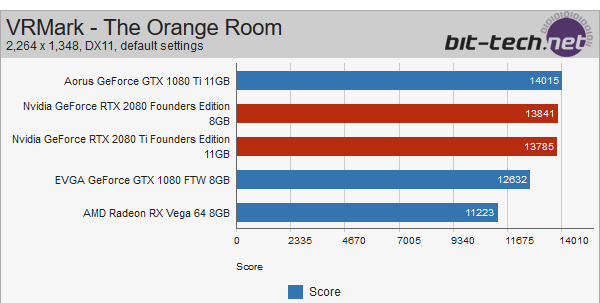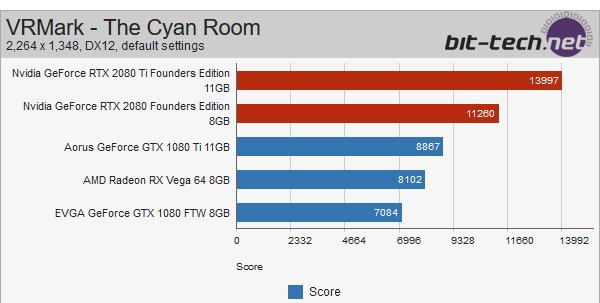A Review of the 2080 ti 32% improvement over 1080 ti. That does not seem so great at double the price…
If it would mean that instead of running things at 70 FPS, I could run them at 90 FPS, it could be actually enough 
Meh, expected much more. 
Remember, we, VR Enthusiasts, want raster performance (for now)
~30%ish for $1200 is a big no no.
That is a fair point, however it still is a fair whack spend 
32% basically means 5K+ is the only realistic option.
Take your pick
Don’t discount FOV’eated rendering. Once they get that out, coupled with eye tracking, it could possibly drive the 8kx.
Won’t foveated rendering require individual app support?
Here is a better source with some actual benchmark numbers:
2080 should be fine for 5k+, looks like you will want a 2080ti for the 8k. I am not too happy that I need to spend the extra to run the 8k =/
Thats what I’ve been questioning.
edit. changed the word “telling” to “questioning”
I was and I am 100% sure that even the 2080ti won’t be enough for 8k atleast not for long.
sure it’s enough for shitty unity block simulators but meh, or with high end games but then you need to lower the quality a lot double-meh
Sorry they must have updated the link…
Lots of benchmarks and the stated 32%
Guys, the performance on pancake screens is completely different to the VR performance on the RTX cards
They managed to improve something on the VR side in the RTX cards.
Here you can see the RTX 2080 ti beating out the 1080 ti in VR by about 50% or more.
http://www.overclockersclub.com/reviews/nvidia_geforce_rtx2080ti_rtx2080_founders_edition/7.htm
Though we wouldnt mind more benchmarks.
The 2080 ti seems to be worth it imo.
More to the 2080 ti than that though.
Much more efficient memory compression
4 quadrant distortion correction vs. two on the 1080 (this could be a big deal for us pimax backers)
(the distortion correction for VR is also single pass so no performance loss)
3 new shader models
3 new anti-aliasing modes
Integer and Floating point operations happen simultaneously.
DLSS (only for supported titles) but largely eliminates performance loss from antialasing. Big for VR.
New vrlink connector.
Ray Tracing.
Much more overclocking room than 1080 and overclocking is now a single click with their tool, no more fooling with the voltages.
at least we know why nvidia was not worried about having leftover 10 series cards. i think they will sell all of them. XD
I found this VR benchmark. not bad, the second picture.
VRMark Benchmarks
VRMark is another synthetic GPU benchmark from Futuremark, this time specifically designed to assess a system’s ability to handle VR gaming, although no VR headset is required. The Orange Room test assesses whether a system is capable of meeting the current minimum requirements for an Oculus Rift or HTC Vive VR headset, which equates to a score of 5,000 or above. The Cyan Room benchmark, meanwhile, is a VR benchmark that uses the DirectX 12 API. We run both on all cards at the default settings for easy comparison.

and:

Source: Bit-Tech.net
On tomshardware 2080Ti vs 1080Ti only 26% gain on average. So it is indeed on the special features of 2080Ti to prove its worth or not. Which makes me sceptical as in past new features usually did not get much use in the 1st generation that introduced them.
This is definitely a more positive light and good to look at. I’d be a little cautious of those benchmarks, I’d like to see real world VR game benchmarks.

